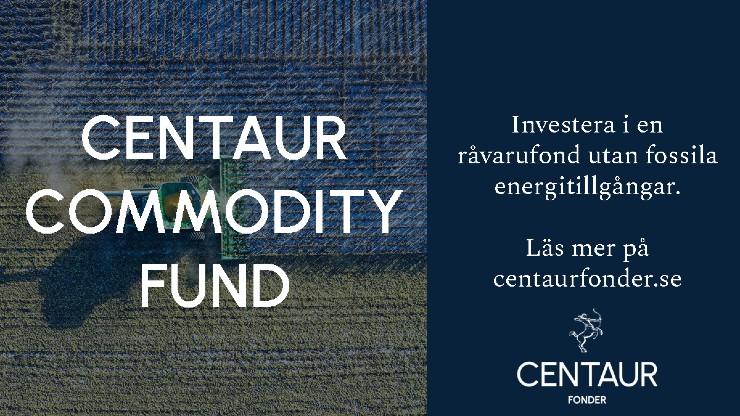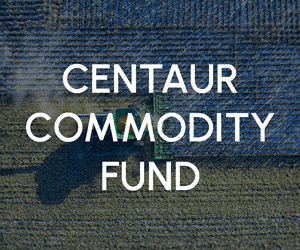Analys
LME Week in three minutes
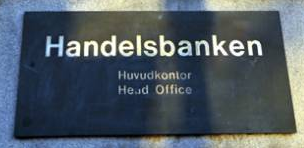
![]() We spent the past week in London for the annual LME Week, where miners and metal traders gather to discuss markets, the outlook and price contracts for next year. The general mood was very different to recent years, when war stories were exchanged after the toughest trading years of the current cycle. Year to date, the zinc price is up by 52%, nickel by 18% and aluminium by 14%; the only laggard among base metals is copper, with a 4% gain. This report details our key impressions and summarises parts of our presentation.
We spent the past week in London for the annual LME Week, where miners and metal traders gather to discuss markets, the outlook and price contracts for next year. The general mood was very different to recent years, when war stories were exchanged after the toughest trading years of the current cycle. Year to date, the zinc price is up by 52%, nickel by 18% and aluminium by 14%; the only laggard among base metals is copper, with a 4% gain. This report details our key impressions and summarises parts of our presentation.
 This year’s theme
This year’s theme
It is amazing to see what a Chinese liquidity boost can do to base metal markets. We were expecting increased bullish sentiment, but the magnitude of optimism surprised us. We think we found this year’s theme at LME Week: the discrepancy between physical and financial traders. Physical players felt it is the best market for years and parked all wider concerns, while the financial community was more cautious, believing that the current stimulus-driven rally was living on at borrowed time.
Nickel is clearly the favoured metal and offers the greatest potential, according to both our and the consensus view. Recent scepticism over policies in South-East Asian has not changed people’s minds. Zinc is still among metals with an anticipated deficit, despite this year’s remarkable price gains. Views are more bearish on copper and aluminium. Expectations for a greater divergence between metals are rock solid.
Small changes make big differences
Not much has happened to the real economy since last year. Global growth was rock steady at 2.8%, but a rising USD/falling RMD indicated a hard landing in China and the market feared the first Fed rate increase in more than a decade. Markets are now confident that the Fed will raise rates cautiously and that Chinese policymakers will launch stimulus as a backstop.
But it means that macro has become the new micro— this year’s second theme. No one is safe from a change in the big picture, as the big picture also sets fundamentals for local markets.
From a macro perspective, there is no lack of challenges ahead. Energy has been this year’s largest mover among commodities, but energy prices will probably not drive metal prices up any further. There is now less pressure on the supply side after price gains, implying much less production cuts ahead. Mining companies have seen their equity explode after undertaking simple housekeeping measures and cautiously dealing with asset temptations, but those tailwinds are now in the past.
 Chinese liquidity behind the turnaround
Chinese liquidity behind the turnaround
The mini-cycles in China have become more frequent but shorter in duration. After launching the infrastructure spending stimulus programme, policymakers appear to act more like fire-fighters than reformers. Credit growth has accelerated again after multiple interest rate cuts in 2015 have revived loan demand. China’s monetary policy has not been as accommodating since 2011.
Property boom momentum fading
Policymakers spent much of 2015 directing stimulus toward the stalled property sector. Property construction is the single most important sector in the Chinese economy. The huge inventory of built but unsold property dried up after the removal of controls on speculators and cuts to mortgage/down-payment rates triggered a sales revival. The drawback of such aggressive stimulus is excessive price increases, especially in first-tier cities. Property prices in Shenzhen rose by 60% y-o-y in mid-2016. As a consequence, policymakers were forced to curb property prices once again. Increasing down-payments and halting sales to non-locals in some cities are two examples of recent steps taken to curb overheating.
Steel market rebalancing
Through a detailed plan for each province, policymakers appear to be taking a stronger stance on cutting back oversupply. Supply cuts occurred at the same time as demand received a boost from a pick-up in property markets. Both supply and demand contributed to a much better balance in the Chinese steel industry during the first half of 2016.
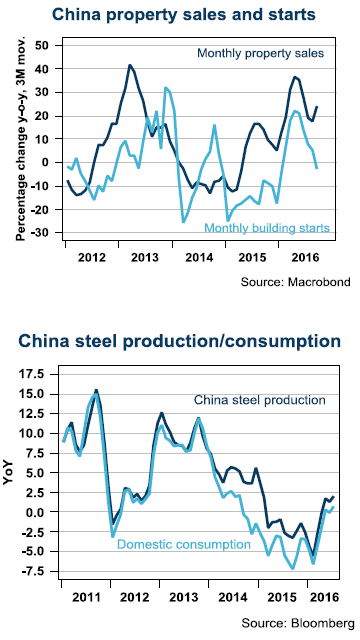 The pressure on overseas steel markets, such as Europe and the US, has stalled, as domestic steel demand in China has increased due to this year’s infrastructure spending programme aimed at balancing the economic slowdown. Steel export volumes from China are still high, but domestic steel prices are about 40% higher year to date. Overseas steel prices have subsequently risen too. Nonetheless, the situation has its roots in Chinese monetary policy in 2015.
The pressure on overseas steel markets, such as Europe and the US, has stalled, as domestic steel demand in China has increased due to this year’s infrastructure spending programme aimed at balancing the economic slowdown. Steel export volumes from China are still high, but domestic steel prices are about 40% higher year to date. Overseas steel prices have subsequently risen too. Nonetheless, the situation has its roots in Chinese monetary policy in 2015.
Analys
Tightening fundamentals – bullish inventories from DOE

The latest weekly report from the US DOE showed a substantial drawdown across key petroleum categories, adding more upside potential to the fundamental picture.

Commercial crude inventories (excl. SPR) fell by 5.8 million barrels, bringing total inventories down to 415.1 million barrels. Now sitting 11% below the five-year seasonal norm and placed in the lowest 2015-2022 range (see picture below).
Product inventories also tightened further last week. Gasoline inventories declined by 2.1 million barrels, with reductions seen in both finished gasoline and blending components. Current gasoline levels are about 3% below the five-year average for this time of year.
Among products, the most notable move came in diesel, where inventories dropped by almost 4.1 million barrels, deepening the deficit to around 20% below seasonal norms – continuing to underscore the persistent supply tightness in diesel markets.
The only area of inventory growth was in propane/propylene, which posted a significant 5.1-million-barrel build and now stands 9% above the five-year average.
Total commercial petroleum inventories (crude plus refined products) declined by 4.2 million barrels on the week, reinforcing the overall tightening of US crude and products.
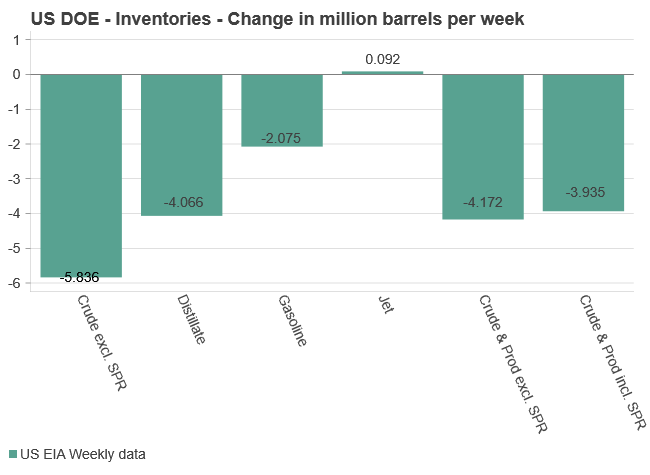

Analys
Bombs to ”ceasefire” in hours – Brent below $70

A classic case of “buy the rumor, sell the news” played out in oil markets, as Brent crude has dropped sharply – down nearly USD 10 per barrel since yesterday evening – following Iran’s retaliatory strike on a U.S. air base in Qatar. The immediate reaction was: “That was it?” The strike followed a carefully calibrated, non-escalatory playbook, avoiding direct threats to energy infrastructure or disruption of shipping through the Strait of Hormuz – thus calming worst-case fears.

After Monday morning’s sharp spike to USD 81.4 per barrel, triggered by the U.S. bombing of Iranian nuclear facilities, oil prices drifted sideways in anticipation of a potential Iranian response. That response came with advance warning and caused limited physical damage. Early this morning, both the U.S. President and Iranian state media announced a ceasefire, effectively placing a lid on the immediate conflict risk – at least for now.
As a result, Brent crude has now fallen by a total of USD 12 from Monday’s peak, currently trading around USD 69 per barrel.
Looking beyond geopolitics, the market will now shift its focus to the upcoming OPEC+ meeting in early July. Saudi Arabia’s decision to increase output earlier this year – despite falling prices – has drawn renewed attention considering recent developments. Some suggest this was a response to U.S. pressure to offset potential Iranian supply losses.
However, consensus is that the move was driven more by internal OPEC+ dynamics. After years of curbing production to support prices, Riyadh had grown frustrated with quota-busting by several members (notably Kazakhstan). With Saudi Arabia cutting up to 2 million barrels per day – roughly 2% of global supply – returns were diminishing, and the risk of losing market share was rising. The production increase is widely seen as an effort to reassert leadership and restore discipline within the group.
That said, the FT recently stated that, the Saudis remain wary of past missteps. In 2018, Riyadh ramped up output at Trump’s request ahead of Iran sanctions, only to see prices collapse when the U.S. granted broad waivers – triggering oversupply. Officials have reportedly made it clear they don’t intend to repeat that mistake.
The recent visit by President Trump to Saudi Arabia, which included agreements on AI, defense, and nuclear cooperation, suggests a broader strategic alignment. This has fueled speculation about a quiet “pump-for-politics” deal behind recent production moves.
Looking ahead, oil prices have now retraced the entire rally sparked by the June 13 Israel–Iran escalation. This retreat provides more political and policy space for both the U.S. and Saudi Arabia. Specifically, it makes it easier for Riyadh to scale back its three recent production hikes of 411,000 barrels each, potentially returning to more moderate increases of 137,000 barrels for August and September.
In short: with no major loss of Iranian supply to the market, OPEC+ – led by Saudi Arabia – no longer needs to compensate for a disruption that hasn’t materialized, especially not to please the U.S. at the cost of its own market strategy. As the Saudis themselves have signaled, they are unlikely to repeat previous mistakes.
Conclusion: With Brent now in the high USD 60s, buying oil looks fundamentally justified. The geopolitical premium has deflated, but tensions between Israel and Iran remain unresolved – and the risk of missteps and renewed escalation still lingers. In fact, even this morning, reports have emerged of renewed missile fire despite the declared “truce.” The path forward may be calmer – but it is far from stable.
Analys
A muted price reaction. Market looks relaxed, but it is still on edge waiting for what Iran will do

Brent crossed the 80-line this morning but quickly fell back assigning limited probability for Iran choosing to close the Strait of Hormuz. Brent traded in a range of USD 70.56 – 79.04/b last week as the market fluctuated between ”Iran wants a deal” and ”US is about to attack Iran”. At the end of the week though, Donald Trump managed to convince markets (and probably also Iran) that he would make a decision within two weeks. I.e. no imminent attack. Previously when when he has talked about ”making a decision within two weeks” he has often ended up doing nothing in the end. The oil market relaxed as a result and the week ended at USD 77.01/b which is just USD 6/b above the year to date average of USD 71/b.

Brent jumped to USD 81.4/b this morning, the highest since mid-January, but then quickly fell back to a current price of USD 78.2/b which is only up 1.5% versus the close on Friday. As such the market is pricing a fairly low probability that Iran will actually close the Strait of Hormuz. Probably because it will hurt Iranian oil exports as well as the global oil market.
It was however all smoke and mirrors. Deception. The US attacked Iran on Saturday. The attack involved 125 warplanes, submarines and surface warships and 14 bunker buster bombs were dropped on Iranian nuclear sites including Fordow, Natanz and Isfahan. In response the Iranian Parliament voted in support of closing the Strait of Hormuz where some 17 mb of crude and products is transported to the global market every day plus significant volumes of LNG. This is however merely an advise to the Supreme leader Ayatollah Ali Khamenei and the Supreme National Security Council which sits with the final and actual decision.
No supply of oil is lost yet. It is about the risk of Iran closing the Strait of Hormuz or not. So far not a single drop of oil supply has been lost to the global market. The price at the moment is all about the assessed risk of loss of supply. Will Iran choose to choke of the Strait of Hormuz or not? That is the big question. It would be painful for US consumers, for Donald Trump’s voter base, for the global economy but also for Iran and its population which relies on oil exports and income from selling oil out of that Strait as well. As such it is not a no-brainer choice for Iran to close the Strait for oil exports. And looking at the il price this morning it is clear that the oil market doesn’t assign a very high probability of it happening. It is however probably well within the capability of Iran to close the Strait off with rockets, mines, air-drones and possibly sea-drones. Just look at how Ukraine has been able to control and damage the Russian Black Sea fleet.
What to do about the highly enriched uranium which has gone missing? While the US and Israel can celebrate their destruction of Iranian nuclear facilities they are also scratching their heads over what to do with the lost Iranian nuclear material. Iran had 408 kg of highly enriched uranium (IAEA). Almost weapons grade. Enough for some 10 nuclear warheads. It seems to have been transported out of Fordow before the attack this weekend.
The market is still on edge. USD 80-something/b seems sensible while we wait. The oil market reaction to this weekend’s events is very muted so far. The market is still on edge awaiting what Iran will do. Because Iran will do something. But what and when? An oil price of 80-something seems like a sensible level until something do happen.
-

 Nyheter3 veckor sedan
Nyheter3 veckor sedanStor uppsida i Lappland Guldprospekterings aktie enligt analys
-

 Nyheter4 veckor sedan
Nyheter4 veckor sedanBrookfield ska bygga ett AI-datacenter på hela 750 MW i Strängnäs
-

 Nyheter4 veckor sedan
Nyheter4 veckor sedanSommaren inleds med sol och varierande elpriser
-

 Nyheter4 veckor sedan
Nyheter4 veckor sedanOPEC+ ökar oljeproduktionen trots fallande priser
-

 Nyheter3 veckor sedan
Nyheter3 veckor sedanSilverpriset släpar efter guldets utveckling, har mer uppsida
-

 Analys4 veckor sedan
Analys4 veckor sedanBrent needs to fall to USD 58/b to make cheating unprofitable for Kazakhstan
-

 Nyheter4 veckor sedan
Nyheter4 veckor sedanTradingfirman XTX Markets bygger datacenter i finska Kajana för 1 miljard euro
-

 Nyheter2 veckor sedan
Nyheter2 veckor sedanUppgången i oljepriset planade ut under helgen



